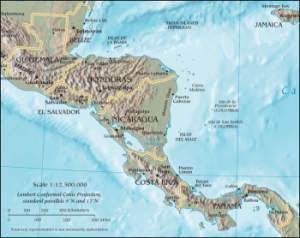The number of reported autochthonous transmission of chikungunya virus in the Americas rose by 95,000 cases during the past week, according to new data released by the Pan American Health Organization (PAHO) Friday.

In June 2014, El Salvador reported locally transmitted chikungunya cases for the first time in Central America. Five months later we see El Salvador with a total of 93,000 cases. By far the biggest rise in any one country, the Central American country went from 16,443 suspected and confirmed cases the week ending Oct. 31 to 93,274 yesterday for an increase of nearly 77,000.
Elsewhere in Central America, hundreds of cases of chikungunya were reported Honduras, Nicaragua and Panama.
In the Caribbean, the Dominican Republic, which hasn’t reported a case to the PAHO in some time, reported an additional 13,000 locally acquired cases during the past week, bringing the island’s total to 499,000.
Puerto Rico, which has reported a steady increase in locally acquired cases in recent weeks, saw an additional 1,260 cases during the past week, bringing the total to nearly 19,000 cases.
Local transmission of chikungunya in the Western hemisphere first occurred on the island of St. Martin in the Caribbean last December. The current case count in the Americas now stands at 888,806.
On Thursday, the Centers for Disease Control and Prevention advised US travelers to the Caribbean and Central and South America to protect themselves from mosquito bites while traveling in these regions as the outbreak will continue to grow during the fall and winter and beyond.
“The beginning of fall means that mosquito problems in the continental United States will be decreasing. However, travelers to areas where the chikungunya outbreak continues are at risk of becoming infected. It is important that travelers understand these risks and take appropriate actions to prevent being bitten by mosquitoes,” said Roger S. Nasci, Ph.D., chief of CDC’s Arboviral Diseases Branch.
For more infectious disease news and information, visit and “like” the Infectious Disease News Facebook page


6 thoughts on “El Salvador chikungunya cases near 100,000, Dominican Republic at half-a-million”